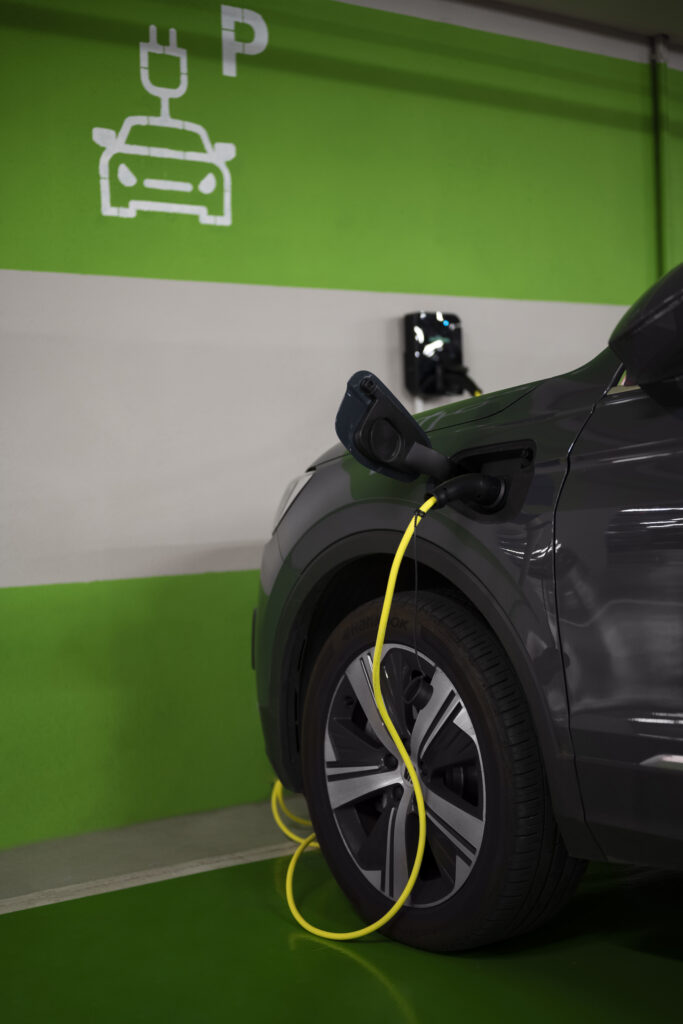The adoption of electric fleets is a trend in the transport, logistics or distribution sector, mainly driven by the need to reduce greenhouse gas emissions and promote sustainability This trend and the transition to electric cars in Europe is supported by a comprehensive regulatory framework that includes CO2 emission standards, European Green Pact initiatives, and alternative fuel infrastructure directives. Some of the most relevant legislation driving this shift is for example the CO2 Emission Standards Regulation (EU Regulation 2019/631) which sets CO2 emission standards for new cars and new light commercial vehicles in the EU.
This regulation sets specific targets for reducing CO2 emissions from vehicles:
- For cars, the target is a 37.5% reduction in CO2 emissions by 2030 compared to 2021 levels.
- For light commercial vehicles, the target is a 31% reduction by 2030.

However, the transition to electric vehicles (EVs) is not a simple decision and requires careful consideration of their advantages and disadvantages compared to internal combustion vehicles (ICE)
Fagor would like to explore the key aspects of this transition and its impact on transport, logistics and distribution companies or any company with a fleet.
Fleet Electrification on the Rise
In recent years, fleet electrification has gained significant momentum, even if it is still some way short of institutional targets. Various driving forces, such as government policies, tax incentives and growing environmental awareness, have led to an increase in the adoption of electric vehicles. Electric vehicle sales are growing exponentially, and this trend is expected to continue in the coming years.
The European Union, for example, has set ambitious targets to reduce carbon emissions, incentivising companies to adopt cleaner technologies. In addition, many cities are already implementing low-emission zones, restricting access to combustion vehicles and favouring electric or cleaner vehicles. This favourable regulatory environment, together with the economic and operational advantages of electric vehicles, is impacting fleet electrification in the transport and logistics sector
Advantages of Electric Vehicles
As mentioned above, the adoption of an electric vehicle fleet changeover has a number of advantages for those who make this decision:
- Tax Incentives and Subsidies
One of the main benefits of electric vehicles are the tax incentives and subsidies offered by the various governments of the European Union, as well as those offered directly by the EU itself. These incentives typically range from tax exemptions, vehicle purchase subsidies and additional benefits such as free parking or access to dedicated lanes These measures help reduce the total cost of ownership of electric vehicles, making the initial investment more attractive to companies.
- Reduced Operating Costs
Electric vehicles tend to have lower operating costs compared to internal combustion vehicles. This is because electric vehicles have fewer moving parts, reducing the need for maintenance and repair. In addition, the cost of electricity is often lower than that of fossil fuel, resulting in significant savings over time.
- Quiet Operation
Another advantage of electric vehicles is their quiet operation. This is especially beneficial for distribution in urban areas, where noise reduction can improve the quality of life for residents and allow deliveries at more flexible times without causing disturbances, as well as increasing the comfort of the vehicle driver by eliminating the engine noise emitted by combustion vehicles.

- Environmental Impact
Electric vehicles are a greener option, emitting no exhaust fumes that contribute to climate change and air pollution. By using renewable energy sources, such as solar or wind, to charge batteries, companies can further reduce their carbon footprint, aligning with sustainability and corporate social responsibility goals.
Disadvantages compared to combustion vehicles
As with any major change, there are also not-so-positive aspects and disadvantages to consider when choosing or replacing a fleet with electric vehicles:
- Range and Charging Time
One of the most significant challenges of electric vehicles is their limited range and the charging time required. This is one of today’s great workhorses, and although battery technology has advanced, electric vehicles still cannot match the range of combustion vehicles in many transport applications. In addition, the time required to recharge batteries is another major drawback, especially in operations that require continuous vehicle use.
- Charging Infrastructure
Charging infrastructure is another major barrier to the adoption of electric vehicles. The availability of fast and accessible charging stations is crucial for the efficient operation of an electric fleet. Companies must either invest in charging infrastructure or rely on public networks, which currently do not yet have the necessary deployment to be able to offer a sufficiently robust network as might be needed. In addition, creating or owning a charging network is currently a costly and logistically complicated option.
- Initial Cost
The initial cost of acquiring electric vehicles remains higher compared to internal combustion vehicles. While tax incentives and lower operating costs attempt to offset this difference in the long run, the initial investment can be a significant barrier for many companies.
- Load Capacity and Adaptability
In specific applications, such as the cold chain, the ability of electric vehicles to maintain temperature control over long periods is a major challenge. The integration of transport refrigeration units (TRUs) in electric vehicles requires advanced technological solutions and can affect vehicle autonomy due to increased energy consumption.
EURO regulations and their application in the electrification process
Certainly, there are already regulatory standards from the European Union that have been restricting and controlling emissions from combustion engines, working towards the goal of reducing greenhouse gas emissions for some time now, such as the EURO regulation that applies to vehicles.
The EURO regulation sets strict emission standards for vehicles in Europe. With each iteration of the regulation, emission limits become stricter, prompting manufacturers and fleet operators to look for cleaner and more efficient alternatives. Electric vehicles, which emit no local pollutants, easily meet these standards and offer a viable solution for companies looking to stay ahead of future regulations.

EURO regulations have been a key factor in reducing emissions from internal combustion vehicles, but have also increased the production and operating costs of these vehicles due to the need for advanced emission control technologies. This regulatory environment makes electric vehicles an increasingly attractive option, not only because of their positive environmental impact, but also because of their ability to comply with the most stringent regulations without the need for costly modifications, although they also have some of the disadvantages noted above.
The transition to electric fleets represents both an opportunity and a challenge for transport, logistics and distribution companies, companies that have their own fleet for their service, and even for each and every one of us on a personal level. While electric vehicles offer numerous benefits, they also face significant challenges, so making a yes or no decision on the issue is not a simple one, nor one that should be made without considering all the aspects and impacts that may be involved.
With increasing pressure from environmental regulations and demand for sustainable solutions from consumers and business partners, companies need to carefully consider the pros and cons of electrifying their fleets. Careful planning, coupled with investments in technology and infrastructure, can help overcome these challenges and position companies for a more sustainable and efficient future.
Adopting electric fleets is not a decision to be taken lightly as we have already reiterated, but with the right approach, it can be a winning strategy that offers competitive advantages and contributes significantly to environmental protection.


